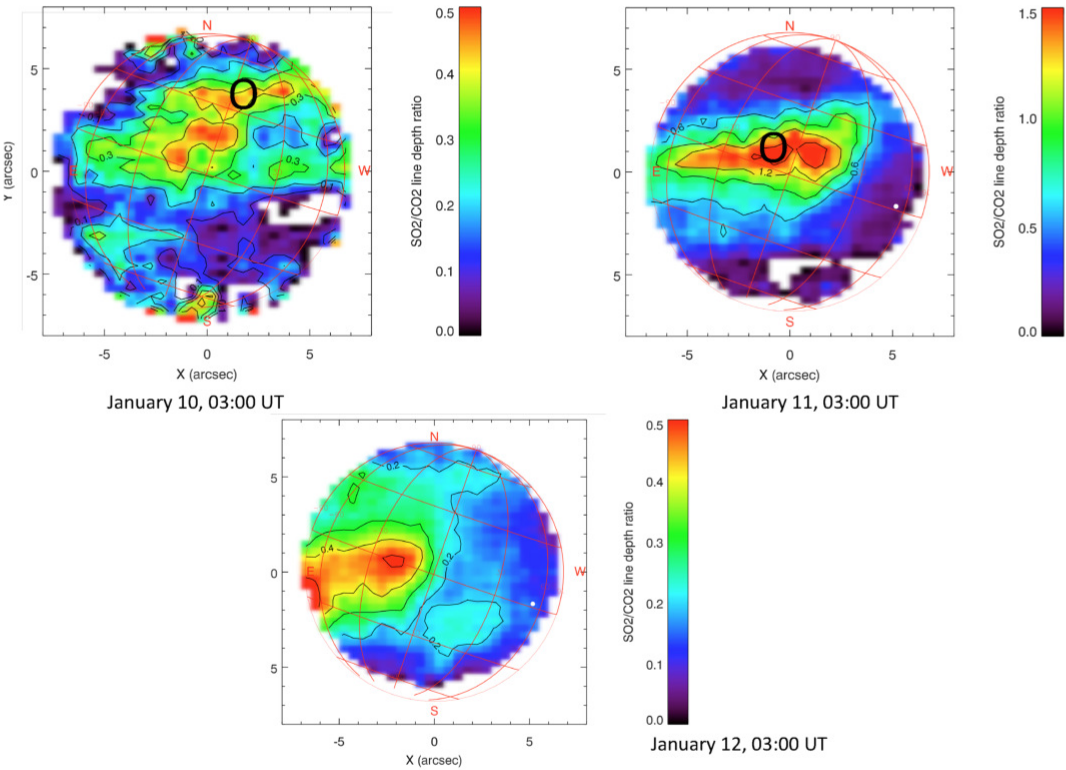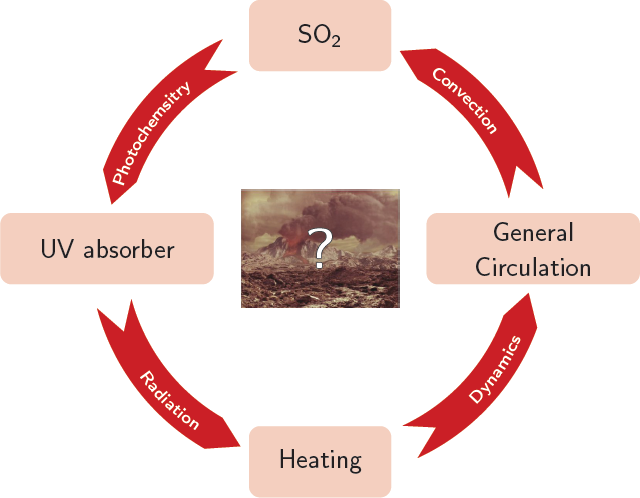Science Objective #1
Map SO₂ above the clouds of Venus
The variability of sulfur dioxide (SO₂) above the clouds of Venus has been observed since the 1980s, showing significant fluctuations over time. Data from space missions such as Pioneer Venus Orbiter and Venus Express, as well as Earth-based observations, indicate that SO₂ levels at lower latitudes can vary dramatically, spanning three orders of magnitude. In contrast, high-latitude regions beyond ±50° show much lower SO₂ levels. Most of the variability at lower latitudes is due to transient SO₂ "plumes" that are localized (less than 1000 km) and short-lived (lasting a few Earth days).
The rapid changes in SO₂ levels suggest a short atmospheric lifetime for SO₂, likely due to fast photochemical reactions. The supply of SO₂ from the lower atmosphere to the cloud tops is dependent on deep vertical mixing, which varies with time, location, and external factors such as volcanic activity. Further observations are needed to understand the mechanisms driving these variations.


